
 |
|
|
Fruits
Volume 63 Number 8 Date 06/21/2018 APPLE MAGGOT - Emergence of adults is anticipated next week. Initial apple maggot treatments should begin 7-10 days after the first fly is captured on a yellow sticky trap and immediately if the fly is found on a red sphere, with later sprays following at 10- to 14-day intervals as long as flies are appearing on traps. A trapping density of one trap every 200-300 feet placed along the perimeter row is suggested. Orchards with past severe AM problems should also place a few traps in the orchard interior. The economic threshold for apple maggot control is one fly per unenhanced trap per week or five flies per enhanced trap per week. CODLING MOTH - The spring flight has peaked in most southern Wisconsin orchards, though trap counts remain high at some sites. Economic captures of five or more moths per trap per week were reported from 13 of 28 cooperating locations (48%) from June 14-20. Apple growers are advised to continue monitoring degree days and CM trap counts until 650-700 units (modified base 50°F) have accumulated from the spring biofix to determine if additional late flights require treatment. Most orchards south of La Crosse have accumulated about 450-600 degree days since May 20-26 when the biofix was set at warmer southern sites. Signs of fruit damage are becoming apparent, and scouting fruits for tiny, circular entry wounds should be underway. SAN JOSE SCALE - Crawlers are emerging from beneath scales in southern and western Wisconsin orchards. Known "hotspots," or areas of suspected high SJS pressure, can be monitored using black electrical tape on scaffold branches. The tape should be wrapped adhesive side-down, and a thin layer of petroleum jelly applied to the outer side of the tape. Captures of 10-15 crawlers on several taped branches over the course of a few days, or 10 crawlers on one tape with zero on all other tapes, may warrant application. Treatments should be applied once the yellow crawlers are active, but before their white, waxy coverings (white cap stage) start to form on the leaves and branches. Conventional products for summer control include Esteem (pyriproxyfen) or Movento (spirotetramat). Options for organic growers are summer oil and biological control. JAPANESE BEETLE - Adults are were observed on ornamentals and in field crops this week, suggesting that Neem oil repellant sprays or neonicotinoids must be applied soon, while populations are low and the beetles are beginning to immigrate into orchards. Neem oil is appropriate for organic systems and effective when applied repeatedly. PyGanic is another organically acceptable method for immediate contact control, but the material dissipates quickly if applied during the day. A third option is Surround WP (kaolin clay) which deters both Japanese beetle and apple maggots, although its efficacy against Japanese beetle is inconsistent. BROWN MARMORATED STINK BUG - UW Entomologist PJ Liesch reports that second-instar nymphs were observed in the Madison area on June 12. The first overwintered adults were captured in pheromone traps during the week of May 24, and the appearance of nymphs indicates that BMSB activity has started early this season. Growers are reminded that the new Midwest Stink Bug App is available to assist with identification and reporting finds of the invasive BMSB: http://blog-crop-news.extension.umn.edu/2018/04/new-app-for-mn-farmers-consultants.html POTATO LEAFHOPPER - Levels of this insect could increase abruptly in orchards as harvesting of second-crop hay accelerates. Non-bearing, one- to two-year-old trees are most susceptible to feeding by leafhopper adults and nymphs and should be inspected for upwards leaf cupping and yellowing of terminal shoots. Treatment is justified at levels of one or more nymphs per leaf when symptoms are developing. DOGWOOD BORER - Pheromone traps should now be in place to provide information on the size and timing of the moth flight, as well as the subsequent larval hatch expected in July. -- Krista Hamilton, DATCP Entomologist 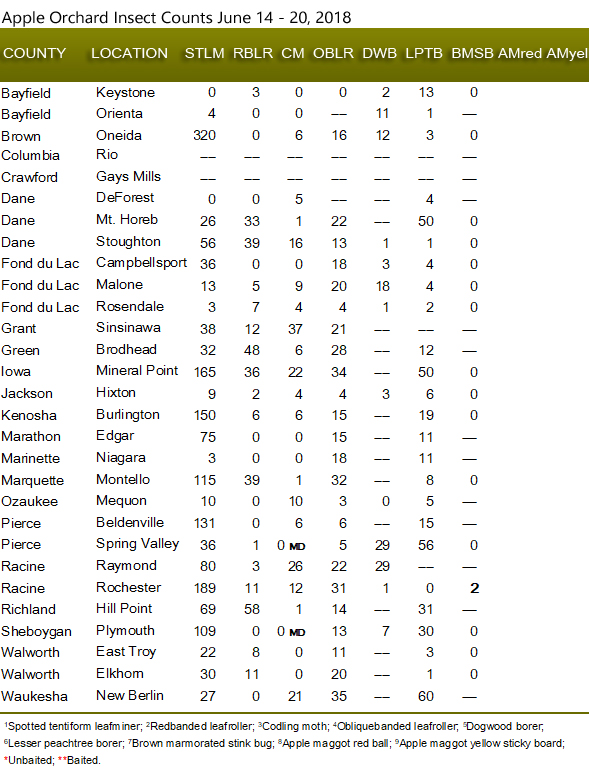

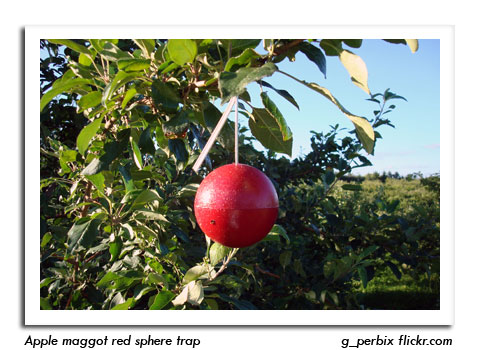
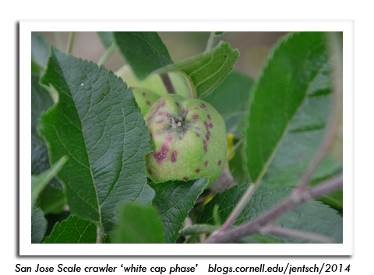
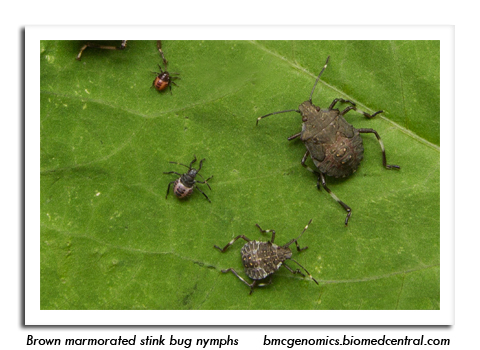
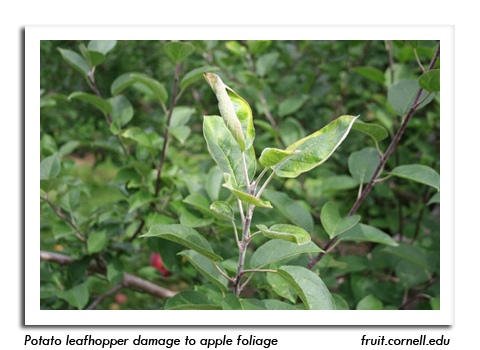
|
|
|